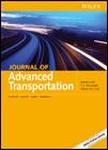版权所有:内蒙古大学图书馆 技术提供:维普资讯• 智图
内蒙古自治区呼和浩特市赛罕区大学西街235号 邮编: 010021

作者机构:Department of Data Communications and Network Engineering Faculty of Telecommunications The Future University Khartoum Sudan Department of Electrical and Electronics Engineering Faculty of Engineering Red Sea University Bosaso Somalia Department of Computer Engineering College of Computers and Information Technology Taif University P.O. Box 11099 Taif21944 Saudi Arabia Selangor Bangi43600 Malaysia
出 版 物:《Journal of Advanced Transportation》 (J Adv Transp)
年 卷 期:2022年第2022卷
核心收录:
学科分类:0710[理学-生物学] 0810[工学-信息与通信工程] 08[工学] 0835[工学-软件工程] 0836[工学-生物工程] 0812[工学-计算机科学与技术(可授工学、理学学位)] 0823[工学-交通运输工程]
主 题:Vehicles
摘 要:Recently, artificial intelligence (AI) technology has great attention in transportation systems, which led to the emergence of a new concept known as Internet of Vehicles (IoV). The IoV has been associated with the IoT revolution and has become an active field of research due to the great need, in addition to the increase in the various applications of vehicle communication. AI provides unique solutions to enhance the quality of services (QoS) and performance of IoV systems as well. In this paper, some concepts related to deep learning networks will be discussed as one of the uses of machine learning in IoV systems, in addition to studying the effect of neural networks (NNs) and their types, as well as deep learning mechanisms that help in processing large amounts of unclassified data. Moreover, this paper briefly discusses the classification and clustering approaches in predicative analysis and reviews their abilities to enhance the performance of IoV application systems. © 2022 Lina Elmoiz Alatabani et al.